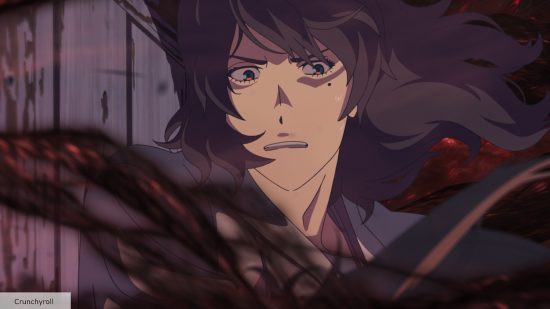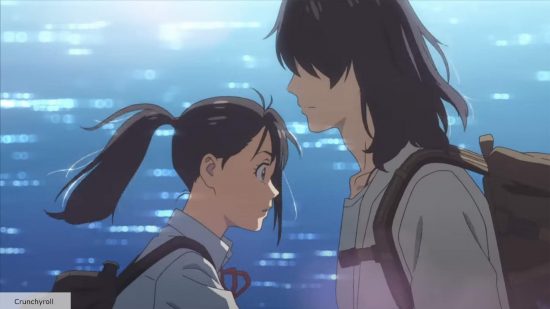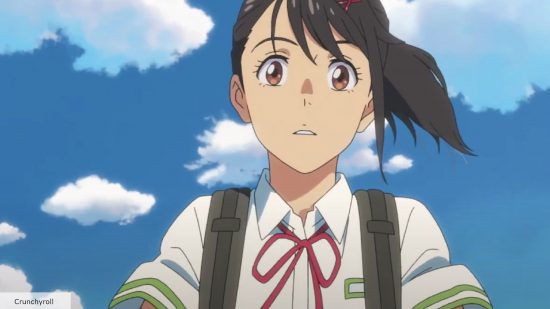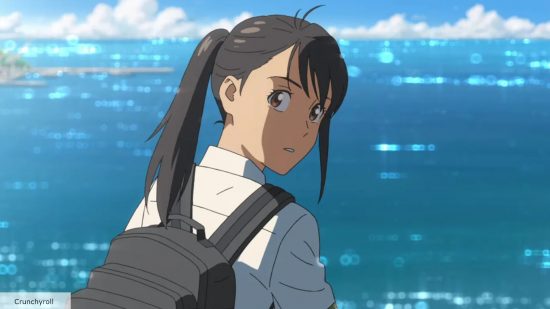Apocalyptic events are a dime a dozen in anime movies and series, but it’s rare to see real-life disasters depicted in Japanese animation. When they are, there tends to be a great distance between the subject and its later portrayal — such as in films like Barefoot Gen or the Studio Ghibli movie Grave of the Fireflies.
Director Makoto Shinkai’s Your Name, another classic in this vein, was inspired by the Tōhoku earthquake that ravaged Japan just five years earlier in 2011, but mostly in a metaphorical sense. Weathering with You, his follow-up to that record-breaking movie, went broader with an exploration of climate change intensified to the nth degree. And now, Shinkai is back with Suzume, a film that closes the gap by anchoring every aspect of its story with the trauma that still lingers following the Great East Japan earthquake of 2011.
What starts out as a whimsical road trip with talking cats and a walking, talking chair eventually goes on to channel both the individual and collective pain of a nation besieged by tragedy. At times, Suzume even recreates aspects of the real-life earthquake on screen, which might sound like a lot to handle, but Shinkai knew that it was important to tackle this head-on.
“I would say I was never that anxious about the reaction of the audience for Suzume,”director Makoto Shinkai tells Digital Fix. “We thought that after 12 years, the audience in Japan would be ready to embrace this kind of topic.” And Shinkai was right.
The response to Suzume has been overwhelmingly positive back home, and that’s because the earthquakes aren’t sensationalised or used to escalate the action for action’s sake. Instead, Shinkai uses Suzume’s fantastical backdrop to create a world where mourning can give way to healing, where pain and loss can become the foundation of something meaningful and even hopeful.
Digital Fix sat down with Makoto Shinkai after the film’s Berlinale premiere to discuss Suzume’s impact, the “Shinkai-style”, and why this story needs to be told now more than ever. And for longtime fans of his work, we also got the lowdown on Suzume’s hidden connections to earlier fare like Your Name and Weathering with You.

How did you settle on a wooden chair for Sōta’s transformation? What other ideas did you toy with before making that decision?
At first, we were thinking about transforming Sōta into a kind of monster. Because the story is about a girl, Suzume, who visits these ruins throughout Japan, and we thought that it would be much cooler if he eventually turned into a monster.
But then we thought a monster would be too scary. Because at the heart of the story of Suzume is the Great East Japan earthquake which happened 12 years ago, as of March, and it’s a very sad story. So we thought that wouldn’t really fit if the partner who accompanies Suzume throughout the journey will be too scary. He should be more like an adorable, cute character and that would also lighten the mood of the movie. With that, we could tell the message of the story.
Sōta’s chair is missing a leg. Can you talk us through the symbolism behind that?
The chair symbolises the missing pieces of Suzume’s heart or soul. And actually, we thought that it lost its leg during the tsunami because it was swept away, like the mother as well. It also stands for the missing parts of Suzume’s soul. We wanted to convey the message that even if something is missing, you’re still able to live on
The doorways act as a very strong symbol throughout the film. To me, it represented everything from the past and the present to the collective and the singular, and of course, the real and the fantastic. What do these doors mean for you personally?
So when we first thought about the concept of the story, we wanted to make a road movie with a protagonist who visits these abandoned places, these ruins, throughout Japan. And so Suzume is actually mourning for the people and also for the land that was hurt by the tsunami and the earthquake. We thought that by having those doors in these abandoned places and by letting Suzume close those doors, it would be the right way of mourning.

What’s the response been like in Japan? Were you worried about how people would react to the use of real-life disasters in the film?
The heart of the story lies in the great natural disaster that happened 12 years ago. We thought that after 12 years, the audience in Japan would be ready to embrace this kind of topic. And that was my expectation. But I must say that after 12 years, the region hasn’t fully recovered yet, and also, the souls of the people haven’t recovered yet.
But at the same time, 12 years are enough to make people forget about this incident as well. There are many younger generations in Japan who can’t recall the disaster anymore. So we thought that this would be the perfect time to pick it up in our movie because otherwise, we would lose the chance to make people aware again that this actually happened 12 years ago. In Japan, the impact is still present there.

Are there any direct connections to Your Name or Weathering with You that fans might have missed in Suzume?
There are no big easter eggs in there, but there are some small details that we added, like the girl named Chika that Suzume meets in Ehime — She’s wearing a helmet, and the design of this helmet is very similar to that one which appeared in the previous movie, Weathering with You.
Also, the background music which you can hear during the news programme that Suzume is watching on TV when they’re covering the thing about Daijin, the cat; Parts of it were also used in Your Name.
What are you most proud of in your career to date? Maybe a particular moment or piece of work or even the impact you’ve had on others in some way?
I’m not a very confident person in general. During the screening premiere yesterday at the Berlinale, I was rewatching the movie, and I thought that there were many points that were not really perfect that we could have done better. The story, the flow of the story. Maybe that was a little bit too fast.
But there is kind of a “Shinkai-style” that is established. There are many animation creators in Japan and also worldwide that have a very similar touch, like me, and I can see young talents worldwide also trying to emulate my style. That makes me very happy.
And there’s also this new technology using AI where the AI draws on its own. With that, you can also type in “Shinkai,” and then the AI starts to draw pictures in the same style that I draw. These kinds of things make me very happy because I see that I have had some profound impact on other people.
If you want to know more about this masterful piece of cinema, check out our Suzume review here. We’ve also got lists breaking down the best anime characters and the best anime villains.
If you prefer your anime a little more action-packed, you might enjoy reading our guides to the One Punch Man season 3 release date and the Demon Slayer season 3 release date.

